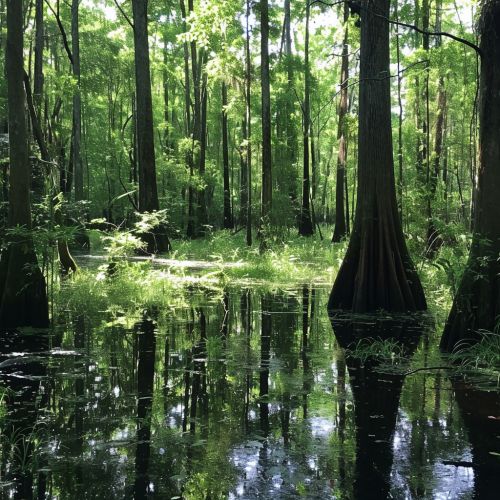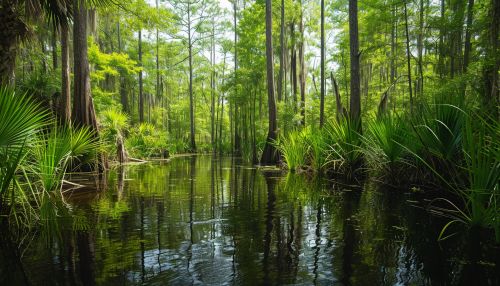Swamps
Introduction
Swamps are a type of wetland ecosystem characterized by waterlogged soils and vegetation dominated by trees and shrubs. Swamps are found throughout the world and play a crucial role in maintaining biodiversity, water quality, and climate regulation.
Classification
Swamps are classified into two primary types based on their vegetation: forested swamps and shrub swamps.
Forested Swamps
Forested swamps are characterized by the presence of trees such as cypress, cedar, or hardwoods like oak and maple. These swamps are often found in floodplains of rivers and streams and have a high diversity of plant and animal life.
Shrub Swamps
Shrub swamps, also known as scrub swamps or buttonbush swamps, are dominated by shrubs like buttonbush, willows, and dogwoods. These swamps are typically found in areas with poor drainage, including abandoned river channels and low-lying areas.
Geography and Distribution
Swamps are found in every continent except Antarctica, with significant concentrations in the Amazon, the Congo Basin, and the Everglades in Florida. They are typically found in low-lying areas near rivers or coastal regions.
Ecology
Swamps play a crucial role in maintaining ecological balance. They provide habitat for a wide variety of species, including birds, mammals, reptiles, and amphibians. Many species are specially adapted to the unique conditions found in swamps, such as waterlogged soils and periods of flooding.
Hydrology
The hydrology of swamps is complex and varies depending on the specific characteristics of the swamp. Some swamps are permanently waterlogged, while others may dry out during certain parts of the year. The water in swamps is typically slow-moving or stagnant and can be fresh, brackish, or saline.
Human Interaction
Swamps have been historically viewed as wastelands or obstacles to human development. However, they provide numerous ecosystem services, including water purification, flood control, and carbon sequestration. Despite this, swamps worldwide are threatened by human activities such as drainage for agriculture, urban development, and pollution.


Conservation
Conservation efforts for swamps are focused on protecting existing swamps, restoring degraded swamps, and promoting sustainable use of swamp resources. Numerous protected areas have been established worldwide to protect swamps and their unique biodiversity.
